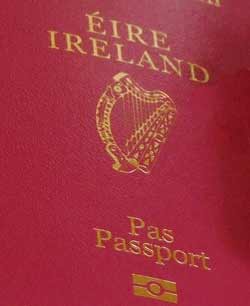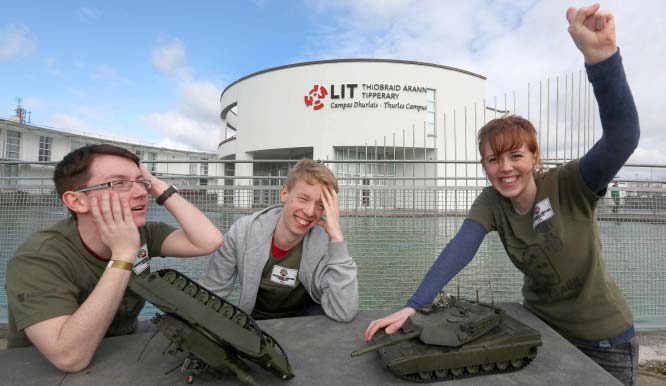|
|
 iPad An iPad was found on the Dublin to Cork train on Tuesday June 1st last. The finder is almost certain that the owner got off the train in Thurles. They have contacted Irish Rail’s ‘Llost and Found’ department, but alas, there have been no inquiries so far.
The finder would really like to unite this iPad with its owner and has asked Thurles.Info to send out an appeal on this website, which we are happy to do.
It may be the case that the person who has lost this equipment, may also have lost their faith in human nature, believing that no one would be honest enough to seek out the true owner.
Well folks they have and I will be happy to introduce the finder, Ms J. Griffin, to you; the person who lost this iPad, so ‘Private Message’ me on facebook, if you can identify the property you lost.

Following an agreement reached by the European Parliament, the EU Commission and the EU Council of Ministers; wireless broadband will be rolled out in Irish cities and towns over the next three years.
This new initiative will see almost 8,000 urban centres, across the European Union, benefit through EU-funding accessed through Irish local authorities.
This plan, when initiated, is seen as being a huge boost for rural provincial towns, where currently broadband coverage is deemed as being somewhat feeble. Same could also see an inflow from rural businesses, with weak broadband access, to open offices in close by urban centres; thus opening greater access to markets.
Local authorities in Ireland will shortly be invited to access grants to set up wi-fi in towns right across Ireland, so that no matter where you are in an Irish town, you should be able to get online for free.

Irish people who are resident both here in Ireland and across the world, will be able to renew their passports online from tomorrow Thursday, March 30th, 2017.
This new online ‘Passport Application Service’ facility, which is currently under construction, will be available shortly on the Department of Foreign Affairs website.
The service, when up and running, is expected to be more convenient, faster and fully secure; offering a more predictable turnaround time for delivery dates to customers, while allowing same to apply using their PCs, Laptops, Tablets and Mobile Phones.
However, please be informed; this new service is only for the renewal of adult applications. First time applicants and children will have to remain using our current, more antiquated system.
The new initiative is part of a reform programme which is expected to modernise Ireland’s overall passport systems and controls.
I wonder if that endangered species known as the “Rural Post Office” would agree! Were not Post Offices delivering you your new passport in 15 working days, for an extra charge of €9.50, plus your passport fee?
Perhaps it is now time to check if rural Ireland could qualify for protection for Post Offices under EU Environmental legislation. Same could be considered as being an unusual, threatened and sporadic species, totally at risk of becoming extinct through habitat destruction brought about by decision makers who believe that passport delivery times could be an hour or two faster.
 LIT Thurles Campus Some fifteen LIT Thurles students in total have been recognised for their achievements in game design and development at Games Fleadh 2017.
The Games Fleadh is an annual all-island games design and development competition for third-level students. Same took place on March 8th last on LIT’s Thurles campus; latter home to a B.Sc in Computing in Games Design and Development.
The 14th annual Games Fleadh event was once again supported by Microsoft Ireland; EA Games; First Data; Game Sparks; Game Stop and the Irish Computer Society.
With over 30 teams taking part in various game design and development competitions, the event organisers are happy to report 2017 as their busiest year yet. All entries were viewed, played and tested by over 400 members of the general public, who flocked to the event.
Judges included representatives from EA Games, Game Sparks, and First Data, who each reviewed the individual entries; scoring the students on their game creations.
Fourth year Game Development students Declan Cordial, James Walsh and Shane Hayes with their entry ‘Fragments of the Damned’ won ‘Best in Original Audio Music’.
Third year Game Development students Joe O’Regan, Sean Horgan and Brian Ryan won ‘Best Windows Game’ with their entry ‘AntiBody’. Another 3rd year Game Development team made up of visiting Canadian students Christopher Law, Noah Petrides, and Settimio Falsetto, were awarded ‘Best in Team Performance’ for their game ‘LightWave’.
Second year Game Development students Alex McAllister, Eoghain McGrath, Luke O’Brien and Nathan Dunne, were awarded ‘Best in Game Design’ for their game ‘I Wanna Be A Racing Game’.
First years LIT’s Robocode Team comprising of students Ciaran Bent, Rory Ryan and Owen O’Dea were placed 3rd in the national Robocode Competition, which involved programming software tanks using the programming language Java.
Congratulations to all those competing.
Limerick Institute of Technology (LIT) situated here in Thurles, Co. Tipperary, will be hosting Ireland’s largest gaming event this year on Wednesday next, March 8th 2017. The theme for this years 2017 event is “Racing Game”.

LIT Tipperary is home to Games Design & Development with a BSc (Honours) obtainable in Computing (Level 8). For further information on this graduate programme click HERE.
This year the Games Fleadh will also feature games development and research discussions with industry veterans and researchers. Companies and organisations taking part in discussions will include Microsoft Ireland, EA, Imirt, Game Sparks and SimVirtua. The full list of speakers is now available on their Gamesfleadh.ie page.
Games Fleadh 2017 while open to the public for free; tickets can now be reserved on their tickets page here. For more follow @gamesfleadh on twitter .
|
Support Us Help keep Thurles.info online by donating below. Thank you.
Total Donated 2025: €130.00
Thank You!
Daily Thurles Mass Livestream
|






Recent Comments